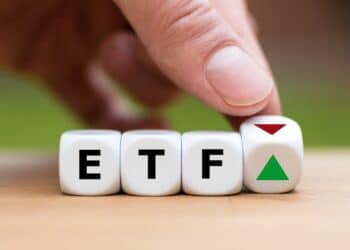For too long, infrastructure and property have been lumped together as ‘alternative assets’ in portfolios. Yet, these assets are already in the mainstream. Large institutions use them, most notably Australia’s sovereign wealth fund, the Future Fund, and more and more investors are catching on to their benefits.
Infrastructure and property assets typically deliver reliable income streams and potential capital growth to investors, as well as portfolio diversification. Recently, demand has increased as investors consider property and infrastructure as substitutes for historically high-yielding Australian equities given the slowing Australian economy and fears of lower yields ahead coupled with the potential winding back of franking credit refunds.
Institutional investments
Institutional investors and large superannuation funds have long invested in infrastructure and global property assets.
Australia’s single largest investor, the Future Fund, has lead the way. At 31 March 2019, a significant 44.6 per cent of the Future Fund’s $154 billion portfolio was allocated to so-called ‘alternative assets’ including infrastructure, property and private equity, which has helped to buoy returns and reduce investment risks.
Australia’s sovereign wealth fund has earned a return of 10.4 per cent pa against a target of 6.5 per cent pa over 10 years. These returns have been helped by a high allocation to alternative assets, which aren’t highly correlated with stock markets.
Table one shows the asset allocation most recently reported for the Future Fund. Notably property and infrastructure are listed on different lines and are not bundled with ‘alternative assets’, indicating the acceptance of the former asset classes into the mainstream by Australia’s largest fund.
Table one: Asset allocation of the Future Fund at 31 March, 2019
Source: Future Fund, portfolio update at 31 March, 2019
Another large institutional investor, industry superannuation fund Hostplus, treats property and infrastructure as separate asset classes too, saying they can be classified as defensive investments when they “derive a high proportion of their returns from strong income (cash) flows rather than capital growth.””
AustralianSuper is another big investor in infrastructure assets and property, also treating them separately from alternative assets. AustralianSuper has significant holdings in Ausgrid, NSW Ports, Westconnex and Brisbane Airport. Elsewhere around the globe, AustralianSuper holds stakes in Indiana Toll Road, Manchester Airport Group and Vienna Airport.
In its Balanced (MySuper) investment option at 31 December 2018 for example, AustralianSuper had an allocation of 25.3 per cent to alternatives, more than its weighting to Australian shares. Infrastructure alone represents 12.7 per cent of its assets. This is shown in chart one.
Chart 1: AustralianSuper MySuper option asset allocation at 31 December, 2018
But I’m not institutional?
While the Future Fund, AustralianSuper and HostPlus have the scale to buy infrastructure and property projects directly, a good option for investors who do not is to invest in listed property and infrastructure funds.
Such funds are often more diversified than owning a single asset as they are diversified across multiple assets and also provide much greater liquidity. This means investors can buy and sell as required on an exchange, whereas an investor in a direct real estate or infrastructure asset must first commit to a large capital outlay for an illiquid investment.
While Australian real estate investment trusts (A-REITs) have been a staple in most Australian portfolios due to their stable income and potential for capital growth, opportunities in Australia are limited as A-REITs account for just three per cent of the world’s listed global property opportunity. One or two securities and sectors dominate the Australian market.
In contrast, the US, Europe and Asia offer real estate investment opportunities not readily available in Australia, including lodging/resorts, healthcare and storage including data warehouses which can offer reliable income, as well as the potential for capital gain.
Yet many Australian investors still consider property and infrastructure as alternative assets and not mainstream asset classes. As a result, they may be underrepresented in most retail portfolios and investors are likely missing out on their potential benefits to offset market risk.
Defence when you need it
With rising risks around the maturing economic cycle and ongoing trade tensions between the US and China, infrastructure and property provide a hedge against an equity market downturn. They have strong defensive qualities as they achieve a high proportion of their returns from income rather than capital.
As chart two illustrates, infrastructure and property are not correlated to asset classes in most Australians’ portfolios using the standard market benchmarks as a proxy for each asset class. The FTSE Developed Core Infrastructure 50/50 Index Hedged into AUD has become the global infrastructure benchmark used by industry participants including asset consultants and asset managers.
Chart two also shows that infrastructure has been among the best performing asset classes since inception of this benchmark on 1 January 2010 while also being lowly correlated with traditional asset classes that dominate Australian portfolios, including local and global equities, Australian listed property, Australian bonds and cash.
Chart 2: Risk and reward of asset classes since inception of FTSE infrastructure benchmark
Source: Morningstar Direct. All returns in Australian dollars. Risk-reward 1 January 2010 – 31 March 2019.
Most Australian investors with global bonds in their portfolio seek a hedged exposure to limit the impact of currency movements on income and the same is true of the standard international (ex-Australia) property index: the FTSE EPRA Nareit Developed ex Australia Rental Index AUD Hedged.
In chart three, a correlation of one means the asset values move together while a score of negative one means they move in opposite directions. Anything below 0.5 could be considered a low correlation.
Chart three: Correlation of asset classes
Source: Morningstar Direct. All returns in Australian dollars. Correlation: 1 January 2010 to 31 March 2019.
In conclusion
ETFs have opened up infrastructure and property making them accessible to all types of investors and no longer just large institutions. Because ETFs are traded on the ASX, investors can easily buy and sell in amounts that suit their individual investment needs.
So, it’s now possible to invest like the Future Fund, but without the capital outlay required to buy assets directly.
Russel Chesler is director – investments at VanEck.





